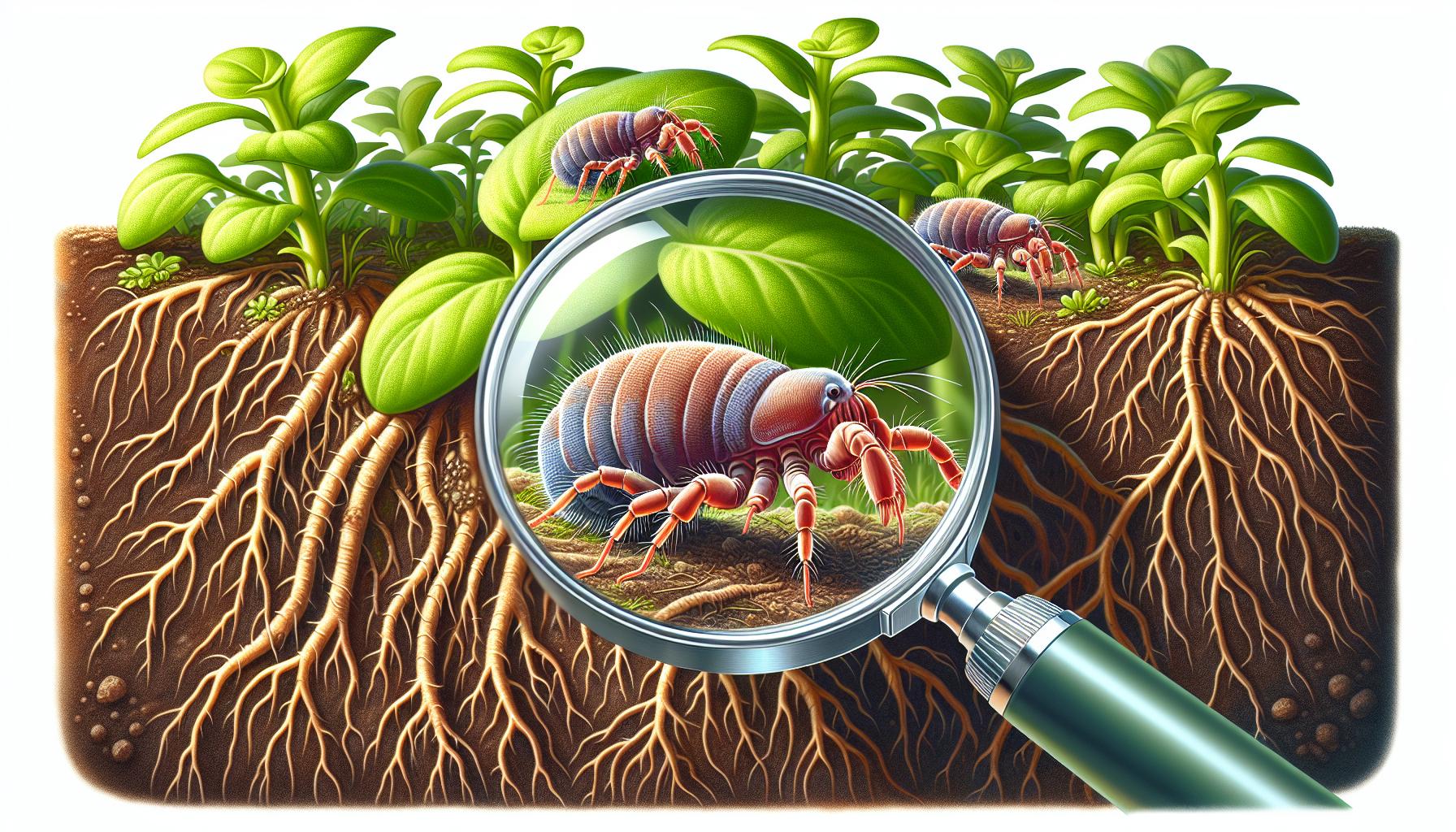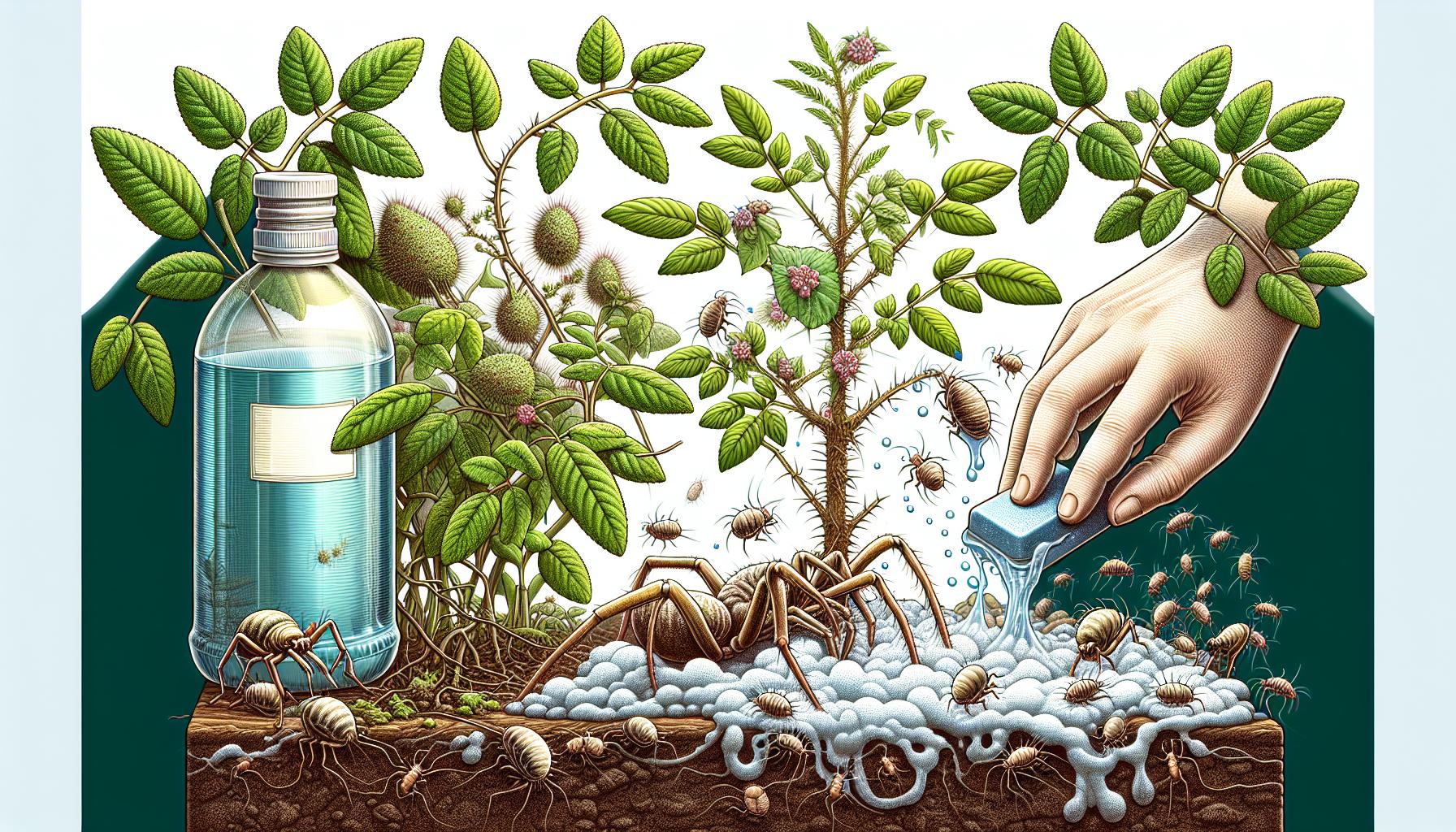
Discovering tiny critters crawling around your plant soil can be a real headache. Soil mites, while mostly harmless to plants, can indicate overwatering or poor soil conditions. You’re probably eager to restore your green haven to its mite-free glory.
Luckily, tackling a soil mite infestation isn’t as daunting as it seems. With a few straightforward strategies, you’ll be able to banish these unwanted guests and prevent future invasions. Let’s jump into the steps you can take to get rid of soil mites effectively.
Understanding Soil Mites
When you notice tiny, spider-like creatures crawling in your plant soil, you’re likely looking at soil mites. These minuscule arthropods are often mistaken for insects, but they belong to the same subclass as spiders. Soil mites play a crucial role in the ecosystem, breaking down organic matter and contributing to the decomposition process. This activity enriches the soil and promotes healthier plant growth.
Types of Soil Mites
Soil mites come in various types, each with a role in the soil’s micro-ecosystem:
- Oribatida: Known for their hard, turtle-like shells, they are slow-moving and contribute greatly to soil health.
- Mesostigmata: Predatory mites that feed on other small invertebrates, playing a vital role in pest control.
- Astigmata: Often found in compost or areas with decaying material, they speed up the decomposition process.
Recognizing an Infestation
Identifying a soil mite infestation involves spotting these signs:
- Increased number of visible mites on the soil surface
- Sudden plant stress that isn’t linked to common issues like diseases or nutrient deficiencies
Even though being harmless to plants, you’ll want to manage excessive soil mites as they can be indicative of overwatering or poor soil conditions. The presence of soil mites might even be beneficial, but an imbalance suggests it’s time to assess your plant care routine. By understanding these creatures and their role, you can work towards a balanced, pest-free garden environment.
Signs of Soil Mite Infestation

Recognising an infestation of soil mites is your first step towards maintaining a balanced garden ecosystem. Even though soil mites being beneficial in moderation, it’s vital to identify an overpopulation that can lead to unhealthy soil conditions.
Look for these indicators to determine if you have a soil mite issue:
- Visible clusters of tiny, white or brown specks moving around the soil surface or on the underside of leaves.
- An unusual number of mites congregating around the base of plant stems or under pots.
- Plant stress, which may manifest as discolouration, stunted growth, or wilting, implying that the soil balance may be disturbed due to excess mites.
- Presence of fine webbing on the soil, similar to what spider mites produce, can be a telltale sign of a soil mite surge.
Monitoring your garden regularly helps you spot these early warning signs before they turn into a larger issue. A simple test involves placing a slice of potato on the soil; if soil mites are present, they’ll be attracted to the potato, revealing their presence. Regular observation of watering habits and leaf litter management will give you insights into potential mite attractants in your environment.
Identifying the Type of Soil Mite

Recognising the specific type of soil mite infesting your garden is a crucial step towards effective eradication. Each species may require different management strategies, so a correct identification will save you time and effort in the long run.
Firstly, examine the mites’ physical appearance. Two common types are Orbatid mites, which are often shiny and slow-moving, and Astigmatid mites, which tend to be lighter in colour and faster. A magnifying glass can help you discern their specific features.
Secondly, note their habitat preferences. Orbatid mites typically prefer decomposing organic matter, while Astigmatid mites are often found in areas with higher moisture levels.
You can also look at the plant damage for clues. Different mites target different parts of the plant. For instance, if you notice the soil surface is disturbed or there are signs of organic matter decomposition, you’re likely dealing with Orbatid mites. Conversely, if the plant’s root system seems affected, Astigmatid mites might be the culprits.
For a definitive identification, consider soil sample analysis by a professional. This will not only confirm the type of soil mite but also provide insight into the soil condition, helping inform your treatment plan.
Remember to monitor the area post-treatment to ensure all mites have been managed effectively. Regular checks will help catch any resurgence early and maintain the health of your plants and soil.
Prevention of Soil Mites

Once you’ve tackled a soil mite infestation, you’ll understand the importance of prevention to avoid future recurrence. Preventive measures are not just cost-effective but also minimize the need for chemical interventions, which can disrupt your garden’s ecosystem.
Regular Inspection
Being vigilant can’t be overstressed. Check your plants and soil regularly for early signs of mite activity. A routine inspection can catch an infestation before it becomes widespread.
Proper Watering Techniques
Overwatering creates a hospitable environment for soil mites. You should water your plants adequately but ensure proper drainage. Soil that’s consistently moist is a calling card for these pests.
- Use pots with drainage holes.
- Allow soil to dry slightly between watering sessions.
- Empty saucers beneath pots after watering to avoid standing water.
Maintain Garden Hygiene
Keeping your garden clean can substantially reduce the risk of mite infestation. Dead leaves and debris are breeding grounds for soil mites.
- Remove plant debris and fallen leaves promptly.
- Clean gardening tools and pots to prevent cross-contamination. Soil Quality and Composition
A well-balanced, nutrient-rich soil is less likely to attract soil mites. Consider adding organic matter to improve soil health. - Introduce compost or well-rotted manure to enrich the soil.
- Use natural fertilizers to maintain soil fertility. Diversity in Planting
Plant diversity confuses pests and can minimize the spread of soil mites. - Incorporate a variety of plants that are known to repel pests.
- Use companion planting as a natural defense strategy.
By implementing these strategies, you’re not just preventing soil mites but also promoting a more robust and resilient garden. Regular upkeep and attentiveness to the condition of your plants and soil go a long way in maintaining a healthy growing environment.
How to Get Rid of Soil Mites

If you’ve discovered soil mites in your plants, you’re likely searching for effective ways to eliminate them. Acting swiftly is crucial for preventing these tiny pests from causing more significant issues.
Take Immediate Action
Start by isolating the affected plant to prevent the soil mites from spreading to your other greenery. Remove any visible mites with a gentle wash. Simply mix a mild soap with water and gently cleanse the plant’s leaves and stems.
Utilise Natural Predators
Introduce natural predators such as predatory mites which feed on soil mites. These beneficial predators are not harmful to your plants but can significantly reduce the population of soil mites.
Change the Soil
If the infestation persists, consider replacing the soil. This removes any eggs or larvae that may have gone undetected during initial cleaning. Ensure you use high-quality, sterile soil to prevent a recurring issue.
Apply Organic Treatments
Organic miticides are available and can be directly applied to your soil. These treatments are usually non-toxic and safe for the plant. Neem oil, for example, is a renowned organic compound that effectively deters a variety of pests.
Remember, identifying the presence of soil mites early and taking immediate action can prevent them from causing damage to your plants. Regularly monitor your plants for any signs of infestation and carry out these strategies as needed to maintain a healthy and pest-free environment.
Conclusion
Tackling soil mites effectively means acting swiftly and using the right strategies. You’ve got the know-how to spot these pests early and the tools to send them packing. Remember, isolation and a thorough wash can work wonders, while natural predators are allies in your quest for a mite-free garden. If all else fails, don’t hesitate to switch out the soil and try an organic treatment. Keep a vigilant eye on your plants, and you’ll keep your green oasis thriving. It’s all in your hands now—happy gardening!
Colin Macmillan is a seasoned entrepreneur and the CEO of Riverwood Landscape, a leading landscaping company based in Canada. He has been at the helm of the company since leaving high school, demonstrating his strong leadership skills and business acumen.
Colin’s expertise lies in various aspects of landscaping, including lawn care, interlocking, sod installation, and commercial maintenance. His hands-on approach and dedication to the craft have been instrumental in building Riverwood Landscape into a reputable brand.
One of his most notable achievements is the creation of a successful landscape franchise that services multiple locations. This accomplishment underscores his strategic thinking and ability to scale operations effectively.
Colin has also had the privilege of working with Guelph Hospital for landscaping and maintenance, a testament to the trust and reliability that his company has earned over the years.
His professional mission is to offer the best services and experiences for customers, a goal that he tirelessly pursues. Colin’s commitment to excellence and customer satisfaction continues to drive the growth and success of Riverwood Landscape.








